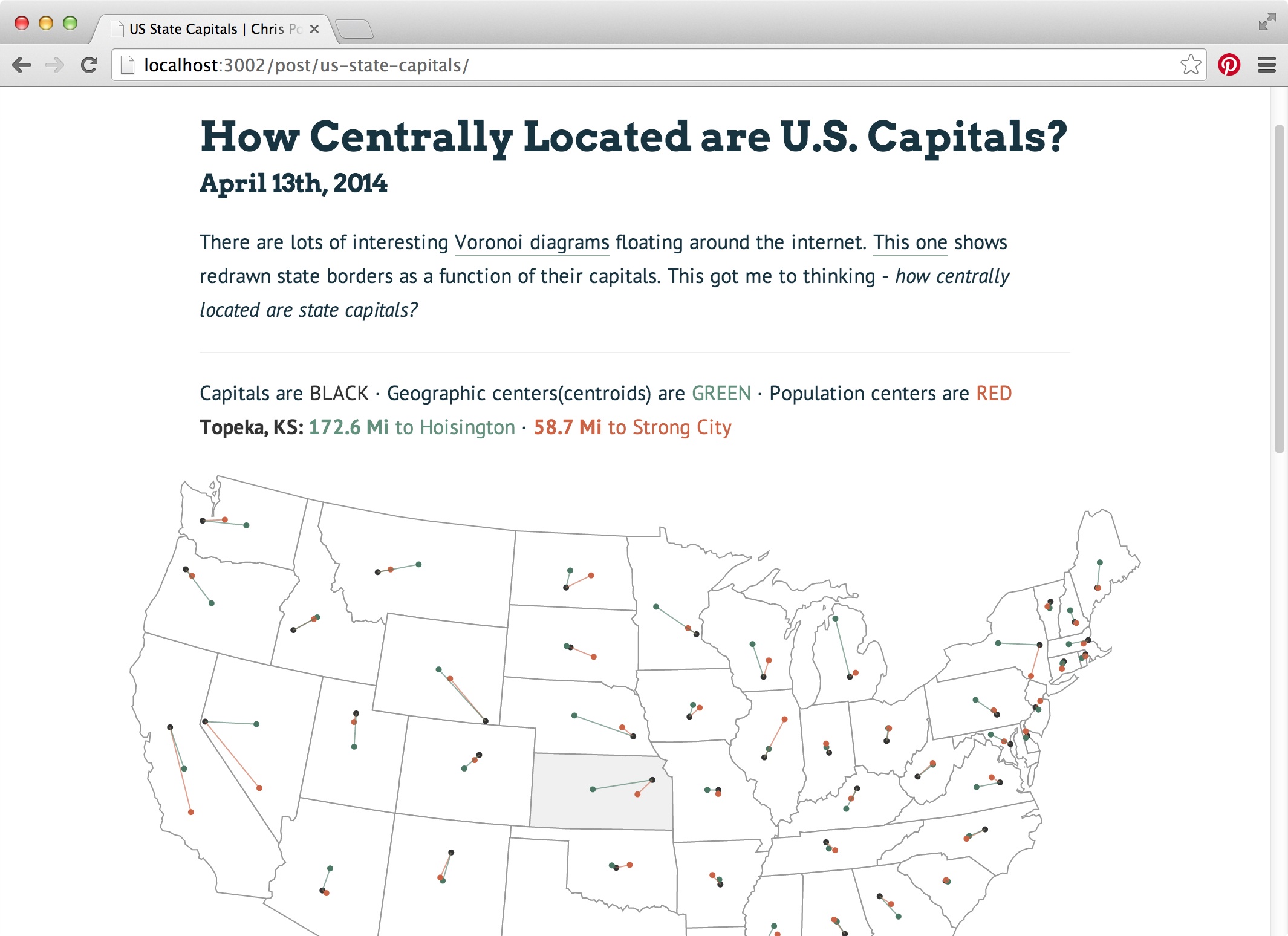How Centrally Located are U.S. State Capitals?
April 16th, 2014
There are lots of interesting Voronoi diagrams floating around the internet. This one shows redrawn state borders as a function of their capitals. This got me to thinking - how centrally located are state capitals?
Capitals are BLACK
·
Geographic centers(centroids) are GREEN
·
Population centers are RED
Sacramento, CA:
123.6 Mi to Chowchilla
·
246.1 Mi to Shafter
